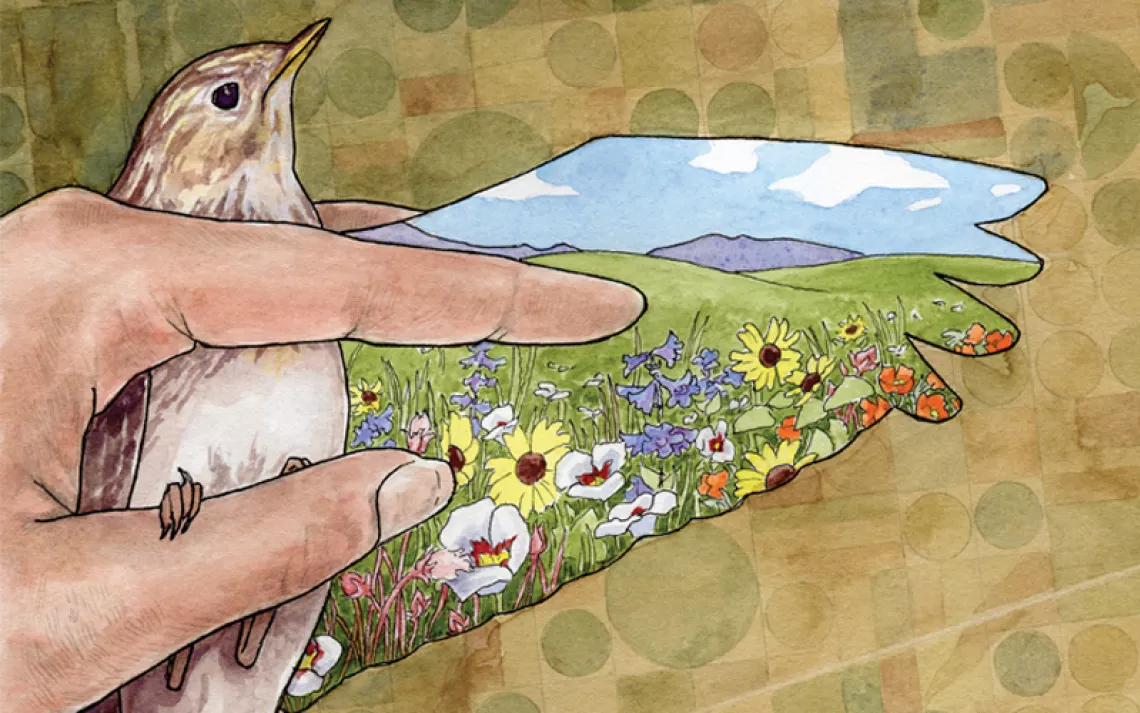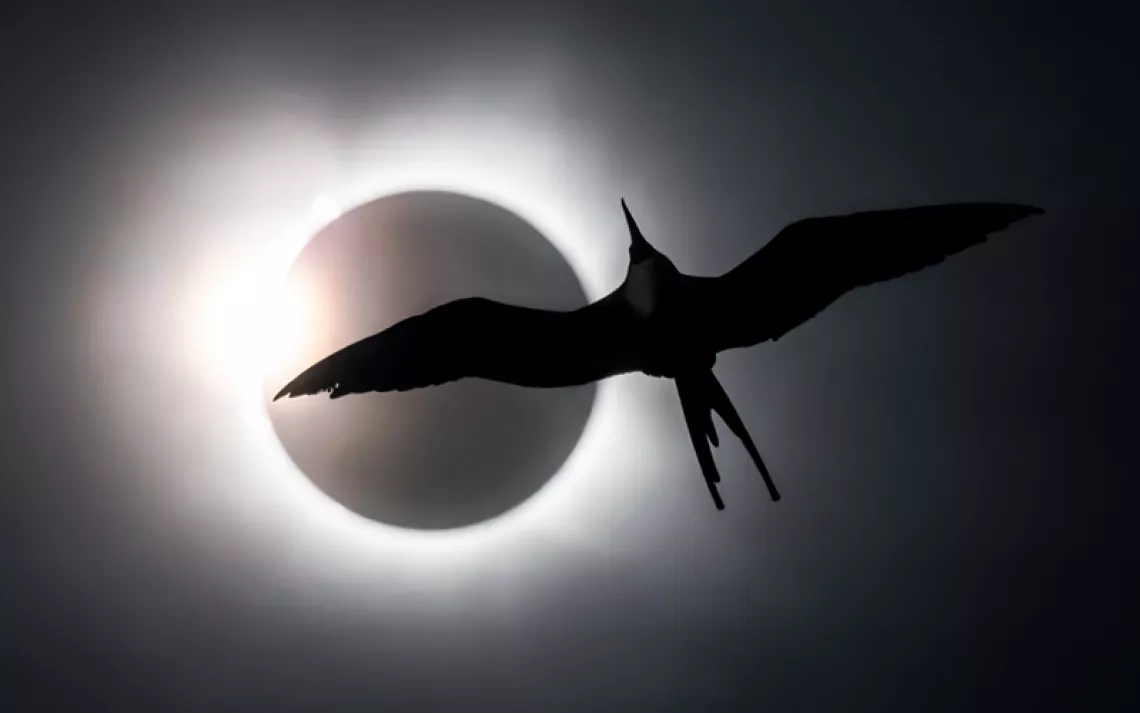Peru's Penguins Imperiled by Their Own Poop
A marine reserve in Peru fends off the greedy hands of Big Guano

Lots of Guanay cormorants and lots of cormorant poop. | Photo by Jamie Lafferty
"Just don't breathe too deeply," Leonardo Doig-Alba said as we walked across a vast plain of sun-dried guano. "The smell isn't too bad today though, right?"
I didn't agree with the Peruvian scientist. We were on a dusty white expanse in the Punta San Juan marine coastal reserve on Peru's southwestern coast, and the pungent stink of the bird poop was as strong as any I've ever experienced. As Doig-Alba and I spoke, we were enveloped in a dazzling reek so sharp that deep breaths became inadvisable.
Despite and because of the smell, this 133-acre site has long needed protection. Conservation efforts have been ongoing here in one form or another since the 1940s, in part to protect 250,000 nesting Guanay cormorants and 3,000 Humboldt penguins. A vulnerable penguin species, Humboldts face existential threats from climate change and overfishing—but also from habitat theft, as the penguins use the cormorants' waste for nesting while humans covet it for fertilizer.

How to sneak up on a bird colony. | Photo by Jamie Lafferty
"In the early 1900s, there were efforts to try to secure the guano supply because companies from Britain and Germany had come to exploit the reserves," Punta San Juan program director Susana Cárdenas-Alayza said. "Guano harvests back then were uncontrolled. They took everything—eggs, nests, and all. After that, the Peruvian government worked out that they could profit themselves, but that it had to be managed as a natural resource in a sustainable way."
In the 1940s, Punta San Juan was declared a "guano reserve" and was walled off to protect the resource. That changed in 2022 when Russia invaded Ukraine. Russia is one of the world's largest producers of fertilizer, and the wide-reaching sanctions against it resulted in a global shortage and increased pressure to harvest from the country's 33 guano reserves, legally or otherwise.
"We expect a lot more pressure for extraction," Cárdenas-Alayza told me. "We ordinarily recommend a controlled guano harvest once every five years, but this year we've had lots of requests throughout the reserve system. We have to keep pushing back so Punta San Juan's five-year guano accumulation period is respected."
Doig-Alba offered a closer look at the birds from a mobile blind he had constructed—similar to a phone booth, covered in a sand-colored canvas. We climbed inside, along with research assistant Lyanne Ampuero-Merino, and awkwardly shuffled half a mile toward the main colony. As we approached a barrier of cormorants, they calmly parted to allow our strange conveyance to pass. Their large, webbed feet clacked on the white crust beneath us. "For some reason, they don't see anything weird when a big box walks around," Ampuero-Merino whispered as we edged forward.
Finally, we reached a concrete hide on a peninsula overlooking a cove. The scene in front of us was prehistoric: In a yawning bay, sea lions and fur seals played with seaweed in the surf, while Humboldt penguins left all their grace in the water and waddled awkwardly up the beach. Everywhere were cormorants taking off and landing in great tornados, occasionally joined by Inca terns and Peruvian boobies and pelicans. It was an entire ecosystem at work, as majestic as it was chaotic, everything drawn to feast on upwellings of anchovies.
The wall to protect the nests from Andean foxes and other poachers was built to emulate the isolation of the guano-producing islands that had no terrestrial predators and stable bird populations. The Punta San Juan project, supported in part by a network of zoos in the United States, has worked so well that seabirds have thrived here "as if they were on a protected island," said Cárdenas-Alayza.
"Now it's something of a refuge for the penguins and the pinnipeds we have," she continued. "We're lucky down here that the climate is so dry and that agriculture isn't big. Closer to valleys in the north, there's a lot of theft."
I asked if protecting the guano (and reporting illegal fishing off the peninsula) had made the program unpopular with the locals in nearby San Juan de Marcona. "Nah," she replied. "We're just the biologists behind the walls."
 The Magazine of The Sierra Club
The Magazine of The Sierra Club



